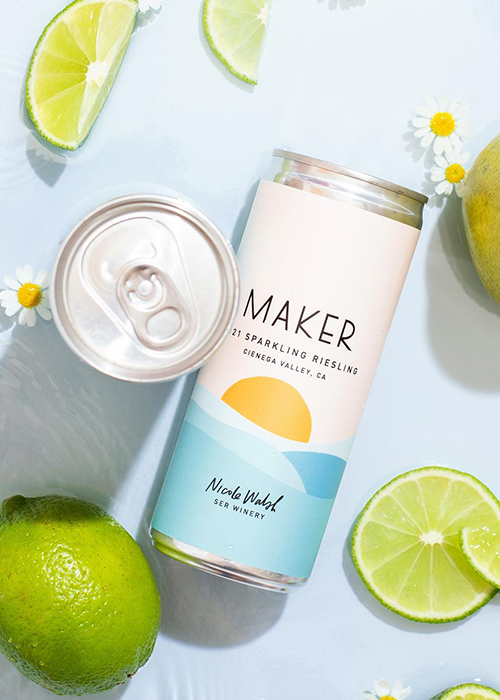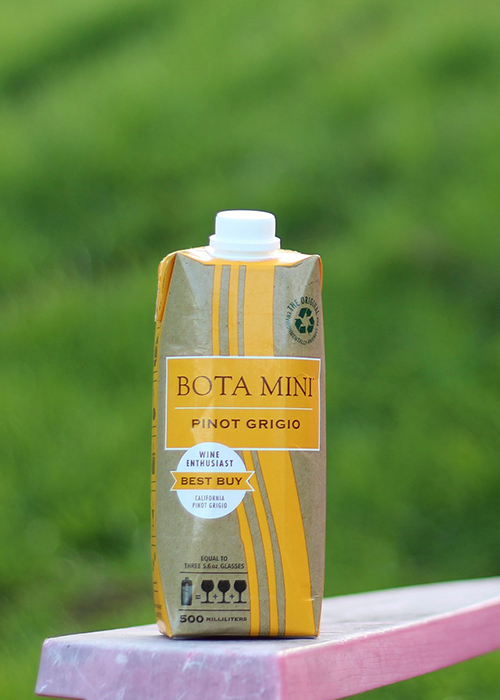Sustainability is a buzzword in every industry, but when it’s used in reference to wine, there’s an immediate association with organic vineyards, biodynamics, and the ever-elusive concept of “natural” wine. Until recently, every time I carried my clanging, beautifully labeled bottles from the nearest natural wine shop home in my canvas tote, I would revel in my eco-friendliness knowing that I had avoided the mass-produced juice I used to drink straight from the spigot when I was in my college-aged Franzia era and the idea of spending $30 on a bottle was laughable.
As it turns out, I am not the wine-sipping environmental warrior I had imagined myself to be. In fact, the Franzia-consuming version of myself may have had the right idea after all — at least on the sustainability front. Because while responsible farming practices may be important in producing wines that have a minimal negative impact on the environment, sustainability in the wine world comes down to the packaging just as much as the wine itself. And though glass may appear to be the better option, those pretty bottles you keep long after the wine has been consumed are actually not that great for the environment.
Sarah Trubnick, founder of Northeast Wine Company and owner of San Francisco’s The Barrel Room, has a background in science but is now firmly entrenched in the wine world. She says that of all the ways wine can be packaged, “glass is the worst, hands down.” And although age-worthy wines may require glass packaging, there’s no reason that young, ready-to-drink wines (which are the majority of wines drinkers consume anyway) couldn’t be packaged in other materials.
Don’t miss a drop!
Get the latest in beer, wine, and cocktail culture sent straight to your inbox.
Getting Past Glass
Glass’s lack of sustainability has many causes, but it all starts with the production of the material itself. While cans, plastic, and cardboard can be produced with renewable energy sources like hydroelectric or solar power, glass must be smelted, a process that requires natural gas. This automatically puts glass at a disadvantage on the sustainability front.

But it doesn’t end there. A material’s ability to be recycled is also an important consideration — and glass does not stack up well against its competitors, especially aluminum. Trubnick says that recycling aluminum is significantly easier than recycling glass. In fact, when you throw a glass wine bottle in the recycling bin, “you’re looking at maybe a third of the glass in your glass bottle being recycled,” she says. And that’s if those bottles are even recycled in the first place. As of 2018, the EPA found that less than 40 percent of glass wine and liquor bottles made it into the recycling bin. Considering that bottles are so heavy, some consumers don’t even bother hauling them to the bin. Cans and cardboard boxes, on the other hand, are easier to smash and break down, respectively, making them simpler for consumers to dispose of properly.
Then comes the transportation factor. Bottles are fragile, which means they require a lot of extra packaging to be shipped without breaking. This packaging often includes Styrofoam or non-recyclable plastic, leading to the emission of even more greenhouse gases in the production of these materials and more waste that consumers don’t even think about while perusing their local wine shop. Cans and boxes are sturdier and less fragile, meaning they don’t have the same problem. Finally, shipping exceptionally heavy boxes of glass bottles requires more fuel for transportation, which adds even more greenhouse gas use to a wine bottle’s carbon footprint. Once you add all those factors up, it becomes increasingly clear that glass bottles just don’t make sense from a sustainability standpoint.
Breaking Down Boxes vs. Cans
If glass is really that unsustainable, what should winemakers be using instead? According to Trubnick, it’s not yet completely clear whether cardboard boxes with plastic bags or aluminum cans are the better option. “Depending on what type of plastic you’re using and depending on how thick of a film of plastic you’re using, all of the numbers change,” she says. “Right now, I think the jury’s out between plastic and aluminum.”
There are benefits and drawbacks to both options. Boxed wine requires the use of a plastic bladder, and since plastic is a petroleum product that requires the use of additional fossil fuels for production, it’s not ideal. Add to that the fact that humans now have traces of plastic in our blood, and a call to produce more plastic doesn’t sound great. But still, in many cases, it’s an improvement over glass: Nicole Lockwood, marketing director of boxed wine brand Bota Box, claims that the carbon footprint for the brand’s boxed wine packaging is 84 percent less than that of glass packaging and creates 85 percent less landfill waste than glass. The brand’s boxes are made from 95 percent post-consumer cardboard fiber and are themselves recyclable. Plus, since there’s no cork involved, the risk of cork taint, a common wine fault, is eliminated.
Aluminum cans also raise potential problems. A thin layer of film is required to protect any canned beverage from contact with the actual metal, and that film can get scratched. When that happens, SO2 (also known as sulfites) can interact with the aluminum and produce a potentially harmful compound called H2S, which smells like rotten eggs. Clearly, this is an issue winemakers want to avoid. But aluminum cans also provide a real benefit on this front: According to Trubnick, “If you can your wine, you don’t have to use the same level of sulfites to protect the wine because cans completely protect from oxygen. It’s an additional interesting factor to avoid that negative H2S production.” As wine that’s lower in sulfites becomes more popular among consumers, packaging wines this way can clearly be beneficial from a sales and branding perspective as well as being a more eco-friendly option.

Turning the Tide on Format Bias
Most winemakers want to produce the most sustainable wine possible, but they also have to make a profit, and consumers are still hesitant to give up bottles in favor of cans or boxes. “There is still a stigma around boxed wine, but that’s fading as more people realize that there are premium wines being packaged in box that taste as good or better than the glass brands that they’re used to buying,” says Lockwood. The fact that the reduced production cost of boxed and canned wine often translates into lower prices for consumers could be an incentive as well.
Maker, a canned wine company, is working to change wine drinkers’ perceptions about canned wine by packaging high-quality wines from small producers who may not otherwise have the means to can their wines. “Format bias definitely exists — we’ve quantified it in our own blind ‘bottle-versus-can’ blind tastings,” says Maker co-founder and CEO Sarah Hoffman. “Education and highlighting the incredible makers behind these wines is a big piece of how we get customers excited about our canned wines.”
With more winemakers taking the leap into canned and boxed wines, there’s a good chance that consumer perception will start to shift. But it’ll take dedicated, forward-thinking producers to can and box high-quality wines that are suitable for more than just beach or picnic sipping. To turn the tide, consumers must demand — and be willing to pay for — premium boxed or canned wines. Though my Franzia days may be over, I look forward to the opportunity to buy wines from my favorite producers in a more sustainable format.


